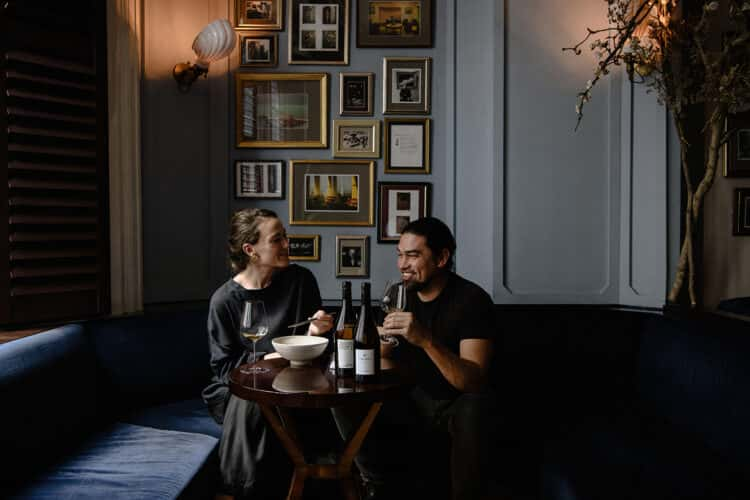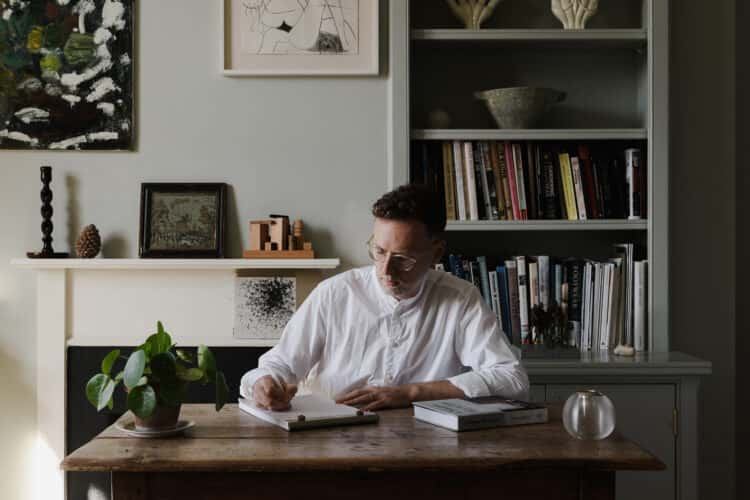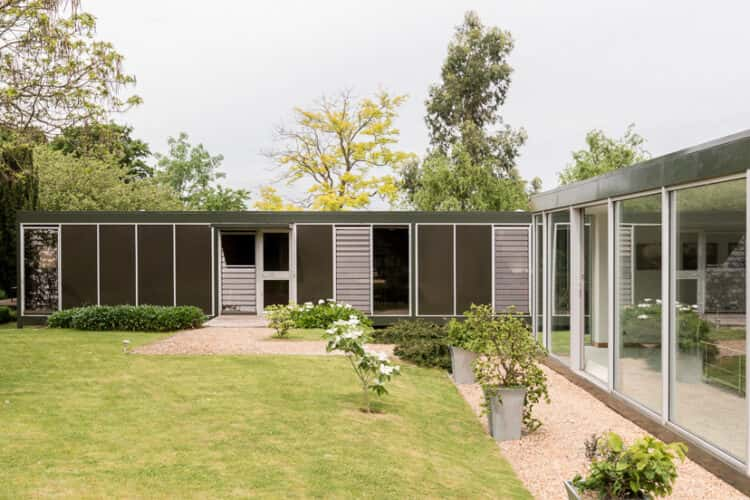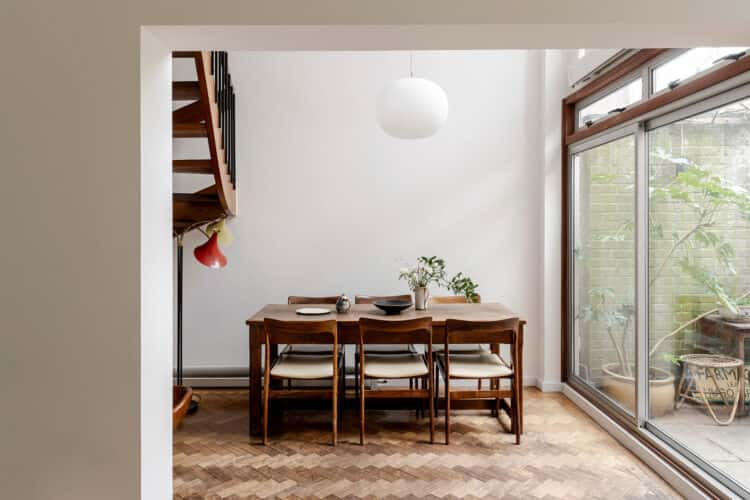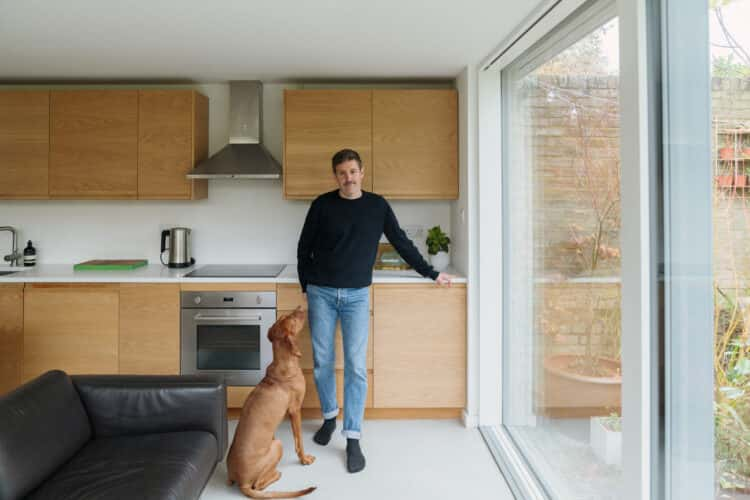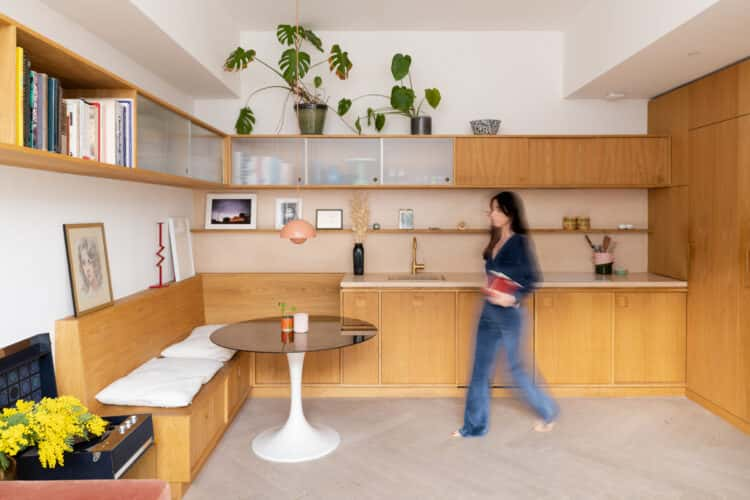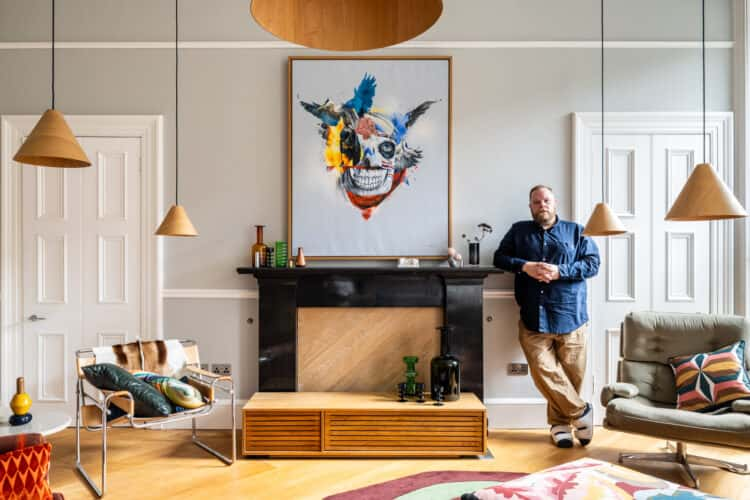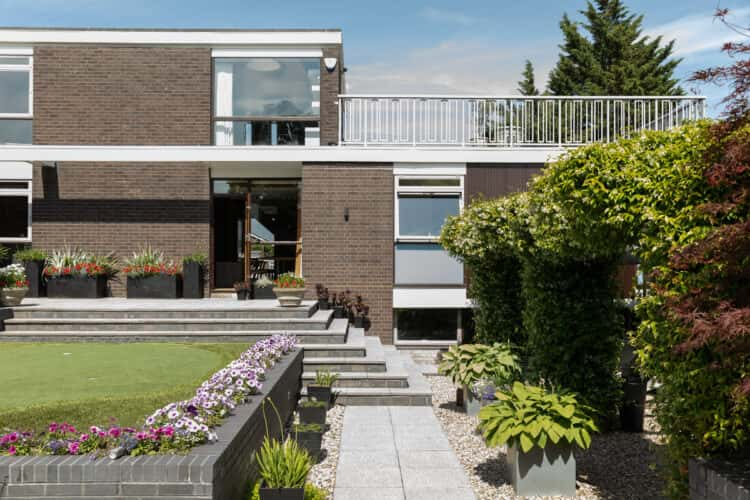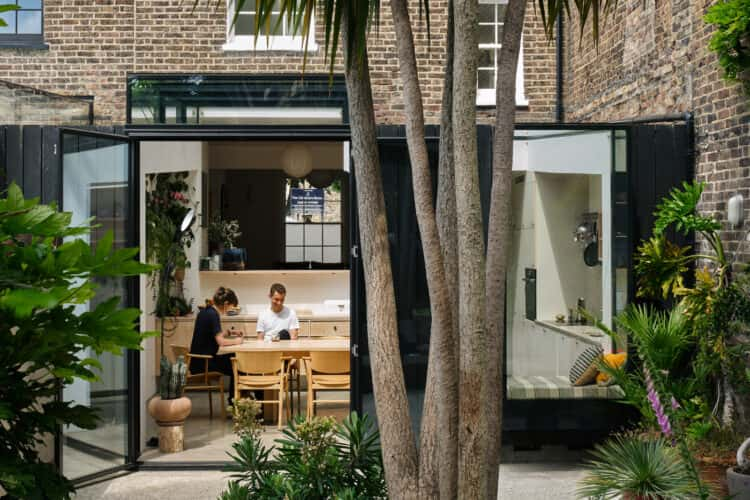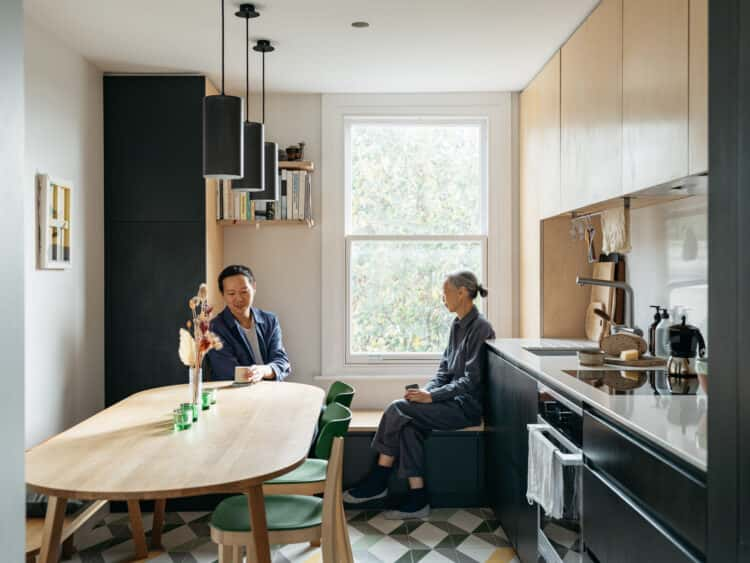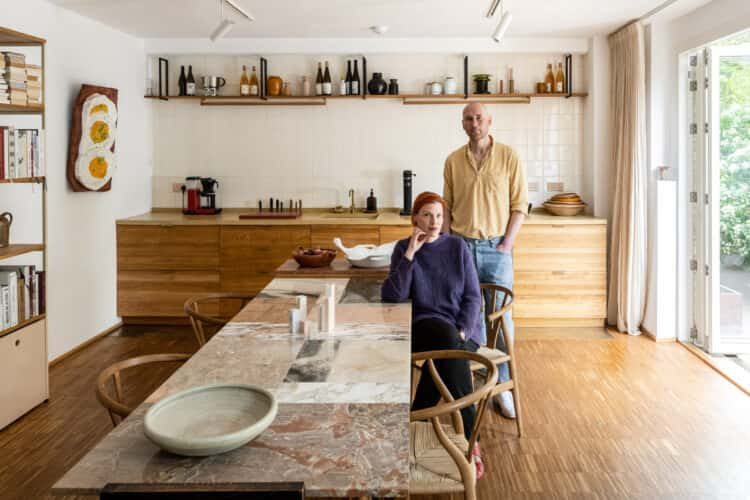Designer Mark Griffiths reflects on building a light-filled living space on top of his workshop in Leyton, east London
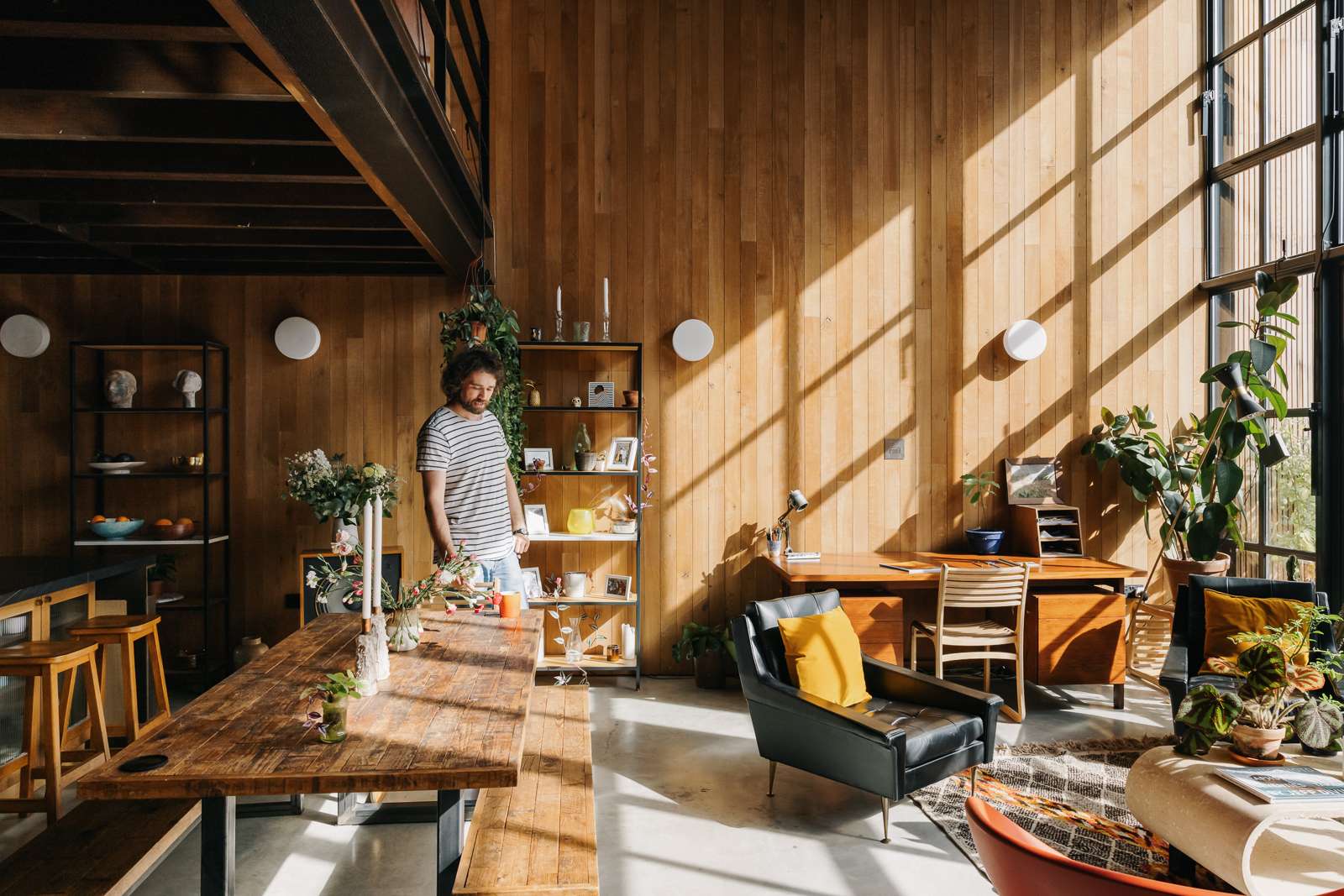
Words Billie Brand
Photography Mark Anthony Fox
The project was by no means an easy feat: it took seven years for Mark and his friend and collaborator Will Paul of William Paul Architecture to complete. But, as he says, hard work pays off: from the warm glow of the timber walls to the mezzanine level that allows for open living and the creative space quite literally on his doorstep, Mark’s creation in Leyton, east London, which he shares with his partner Sophie and son Leo, is a contemporary live/work space with plenty of soul. As it comes on the market, Mark shows us around and reflects on the design and building process, and tells us why the time is right to take on a new project.
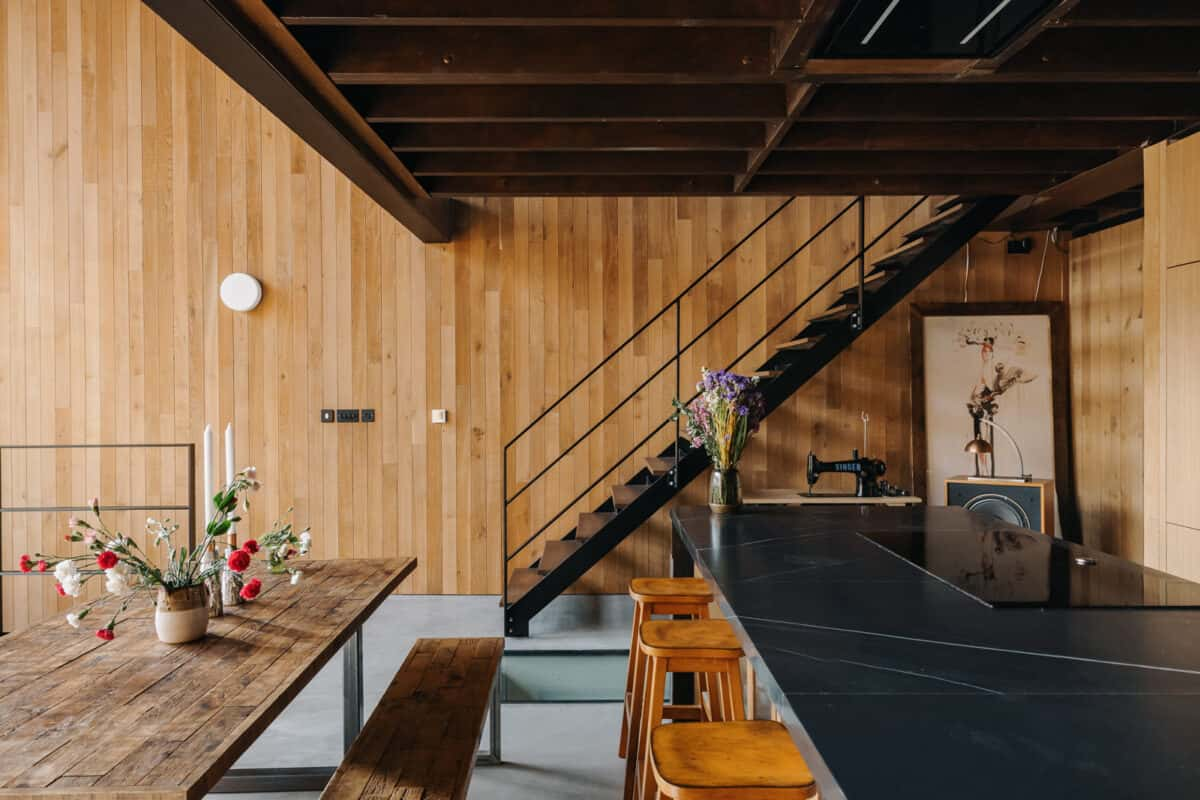
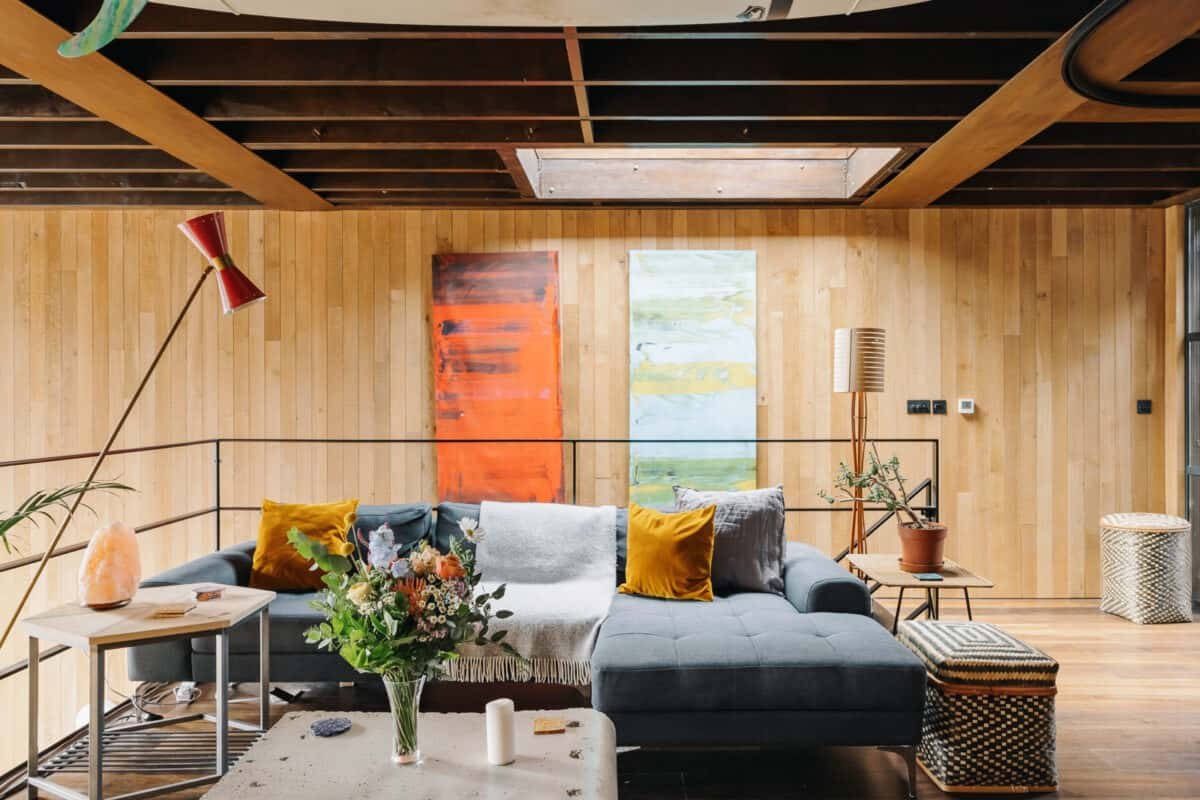
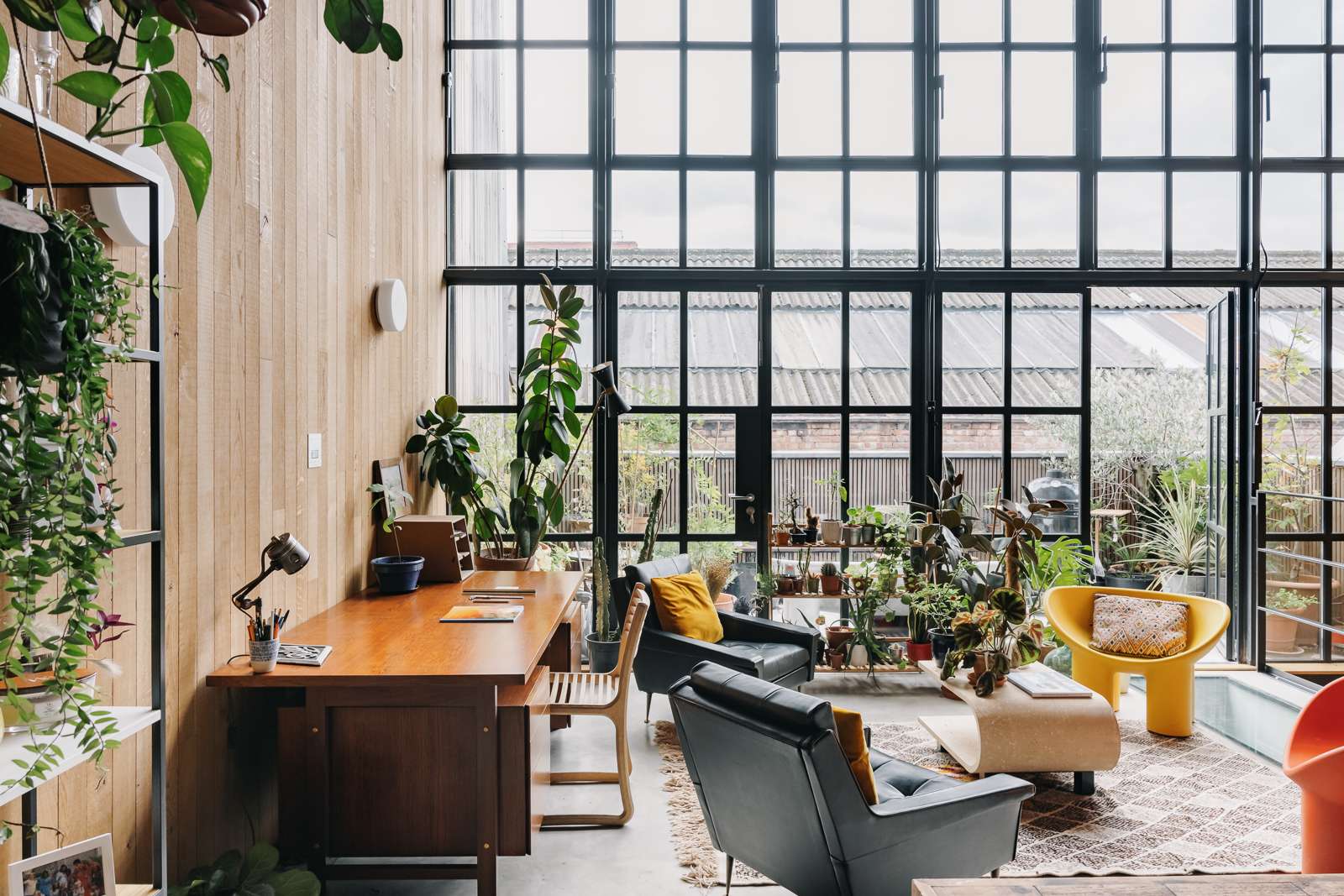
Mark: “Space in London can be very difficult to find. I’m a set builder and furniture designer and I make all sorts of things, so I need a workshop. I was living in a warehouse in Hackney when I found the space downstairs here – it was just a single-storey workshop at the time.
“I started renting the workshop and then I had the opportunity to buy it. I jumped at it! I couldn’t quite believe it. I already had this vision – it was the perfect workshop, but I knew there was the potential to build up and create a live/work unit as I had seen the neighbours do.
“To design and build a home was the next logical step of what I wanted to do in my life. I love the process of getting materials and creating something, then standing back and seeing what you’ve built. You really get a tingly feeling when what you have made is quite special. It’s really satisfying.
“I employed a friend of mine, Will Paul – he’s a really talented architect and runs the practice William Paul Architecture – to collaborate on the project. We first sat down together in 2013 and started designing. With a common interest in mid-century modernism, we sat around Will’s dining table and started sketching, hammering out the brief. The collaboration was really exciting, bringing together an understanding of how the building could work programmatically, spatially, atmospherically, along with my own acute – and borderline obsessive – knowledge of materials and how they come together.
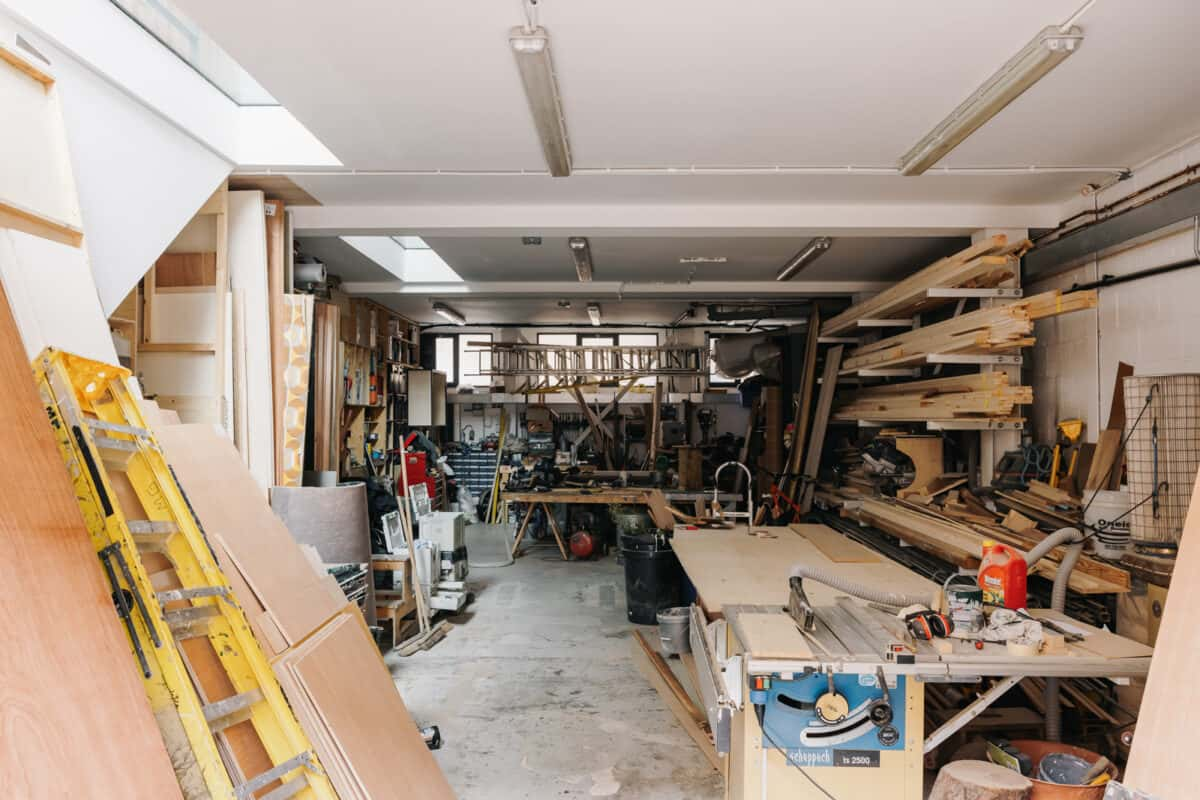
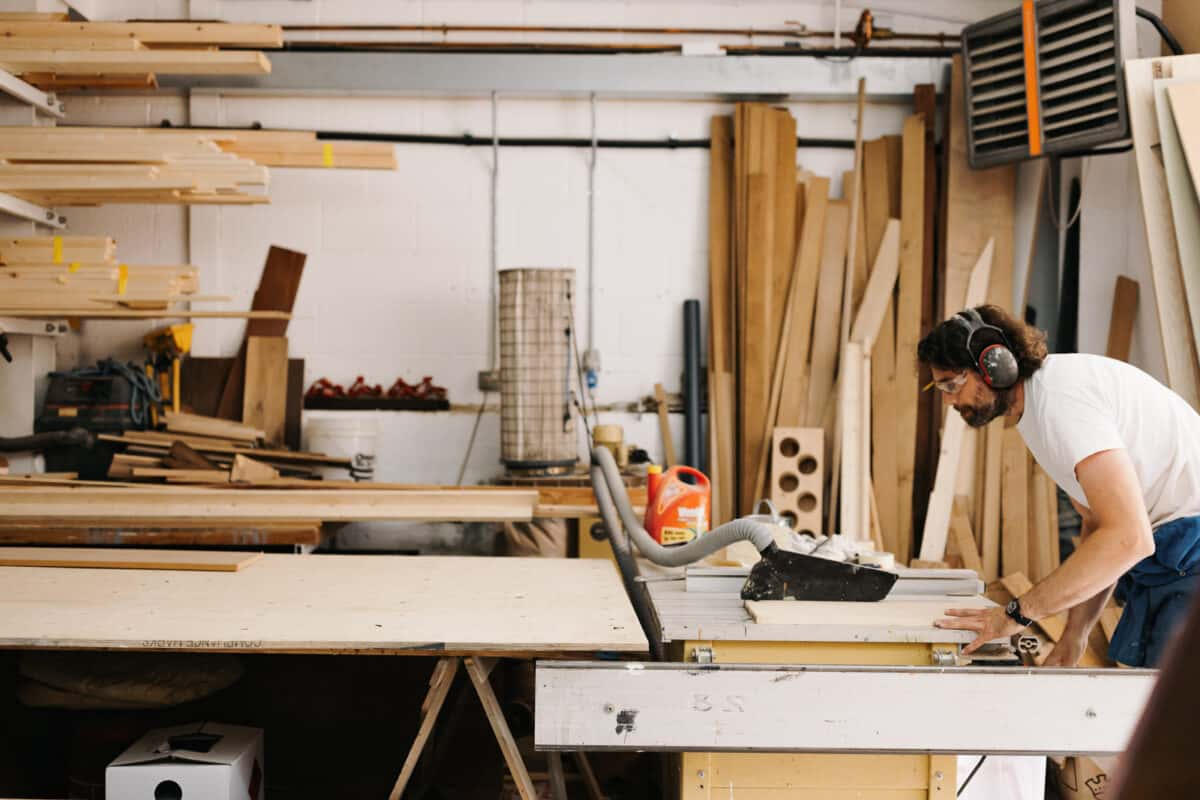
“We developed the concept for the building and took it to planning. The design and planning process was difficult – it took about three years. Will ensured the ethos of the brief and its modernist aspirations were carefully tied into the design and construction drawings. It’s the simple things that make the difference. For example, making sure the glazing sits flush against the timber cladding to emphasise the seamless connection to the outside, or carefully positioning the lightwell so that light treads through the building. It’s these details that really make the space enjoyable.
“I was really hands-on with the building. I had contractors in to do the main shell – all the steelwork, all the cladding and the windows – but from there I undertook everything, all the internal finishes: from polishing the concrete floor to installing the oak cladding and designing and building the kitchen and joinery package. My hands tell a tale of hard work – but hard work pays off.
“One of the most memorable parts of the process was when the steel frame went up and you could see the massing of the space, I was like ‘oh my word, this is really happening’. It was really exciting because we had a giant crane dropping all the materials and elements into the space.
“I really appreciate buildings that have a very minimal palette, so from the beginning, I knew I wanted the palette to be slim: there’s concrete floors, timber walls, steel beams. I love living with timber. It’s so warming. I had one guy walk in a while ago and say, ‘wow, it’s like a Swiss chalet!’
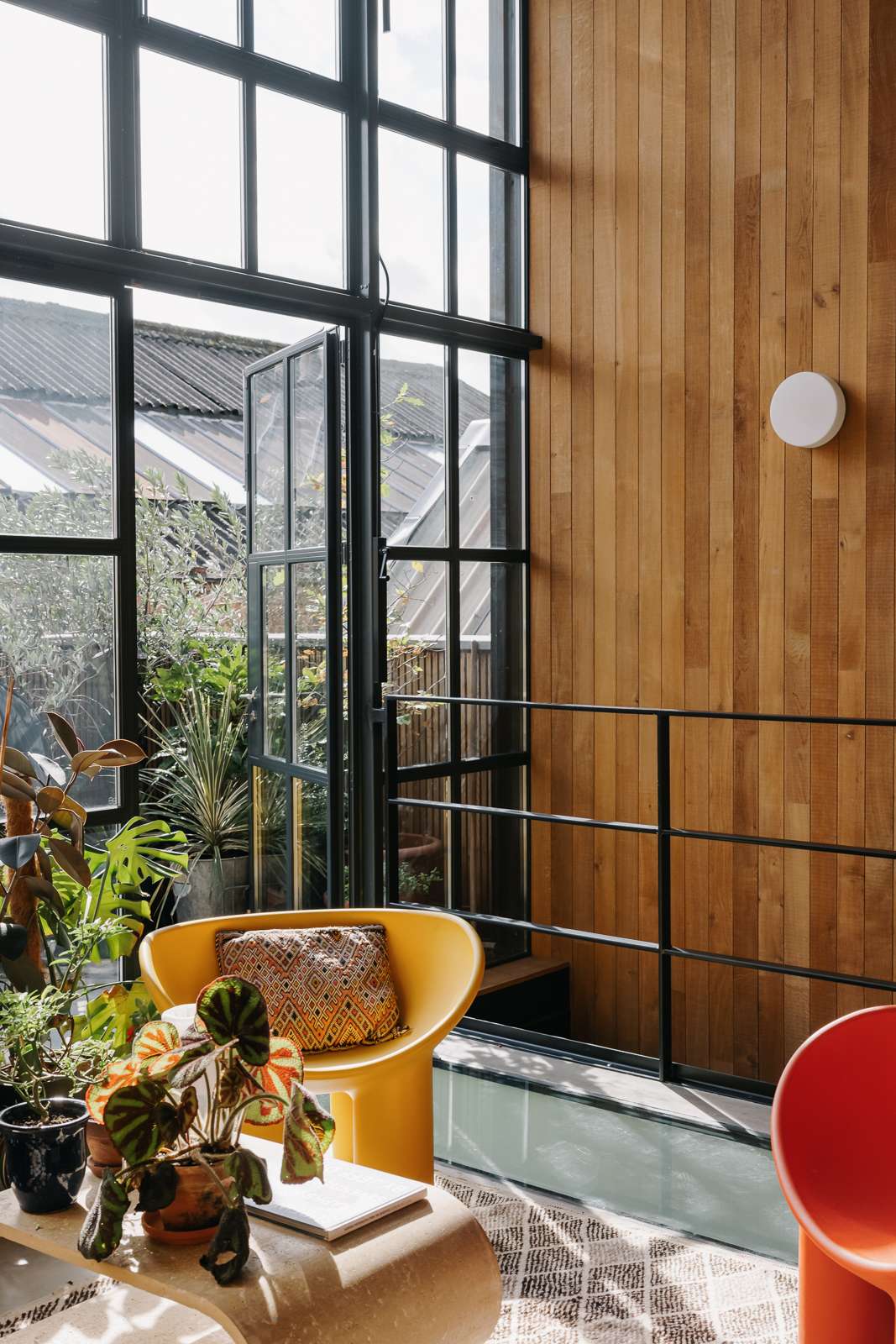
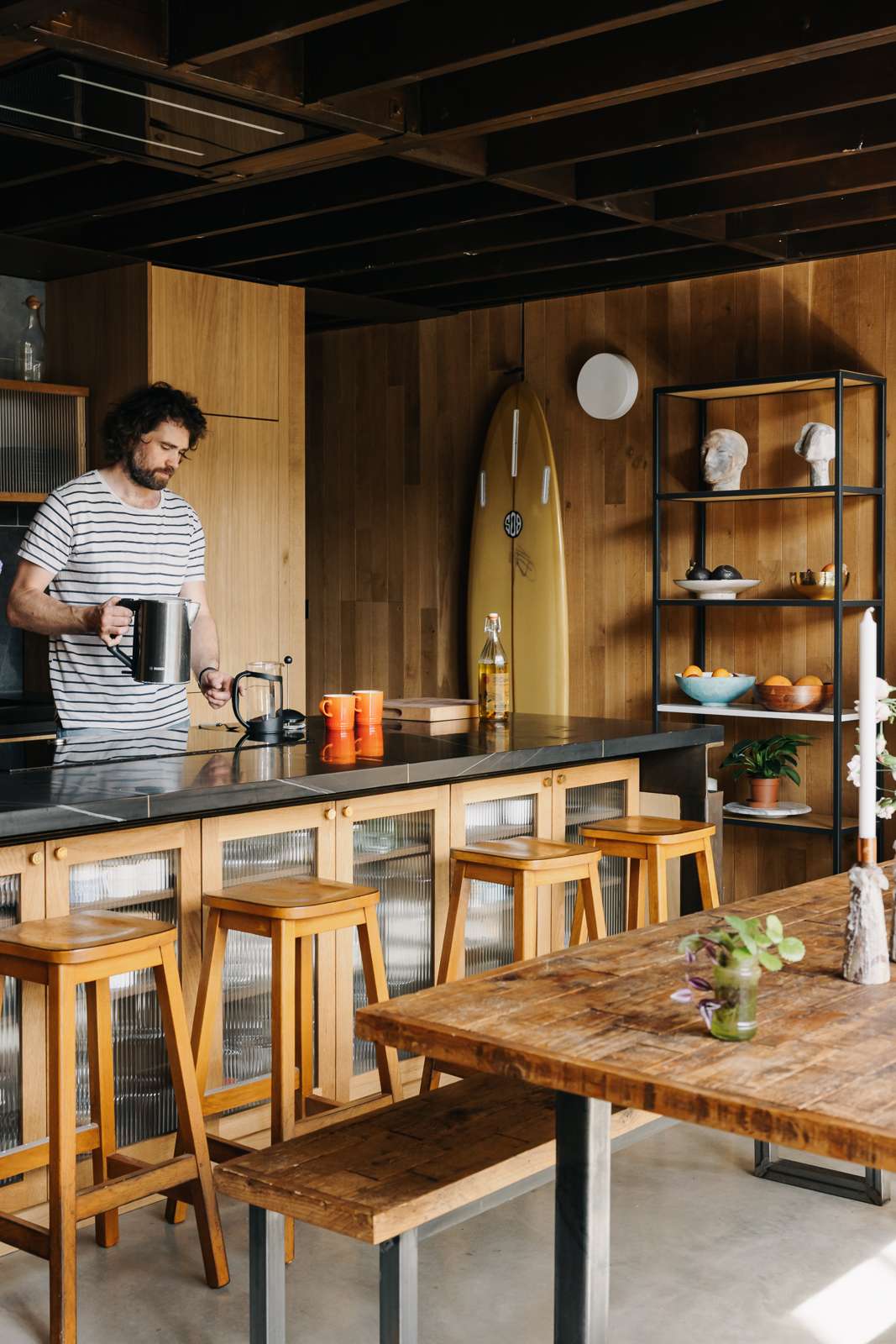
“One of my favourite things about the space is the light that comes through the big window. Daylight enriches you in so many ways. On a sunny day, the windowpanes make shapes across the wall, and as the sun moves throughout the day, it shows all the details on the wood. Then at night, you get this dark, atmospheric, warm, orange-y light. It’s amazing – all the wood glows.
“I put glass panels in the ceiling of the workshop, which is the floor of the living area, so the light goes straight through from the big window. You have that connection to the outside even when you’re downstairs.
“I spend most of my time in the workshop. Everything starts downstairs for me. I’ve designed and built the majority of the furniture in this home down there. I built the coffee table, the chairs and even the bed, which I made from steel beams that once held up the old workshop roof prior to building on it.
“I like honesty within materials. I like to utilise what’s already there – let’s not dress something up as something that it isn’t. It’s the same with my work as a furniture designer. My furniture’s fairly simple but I think simplistic forms are often the most effective.
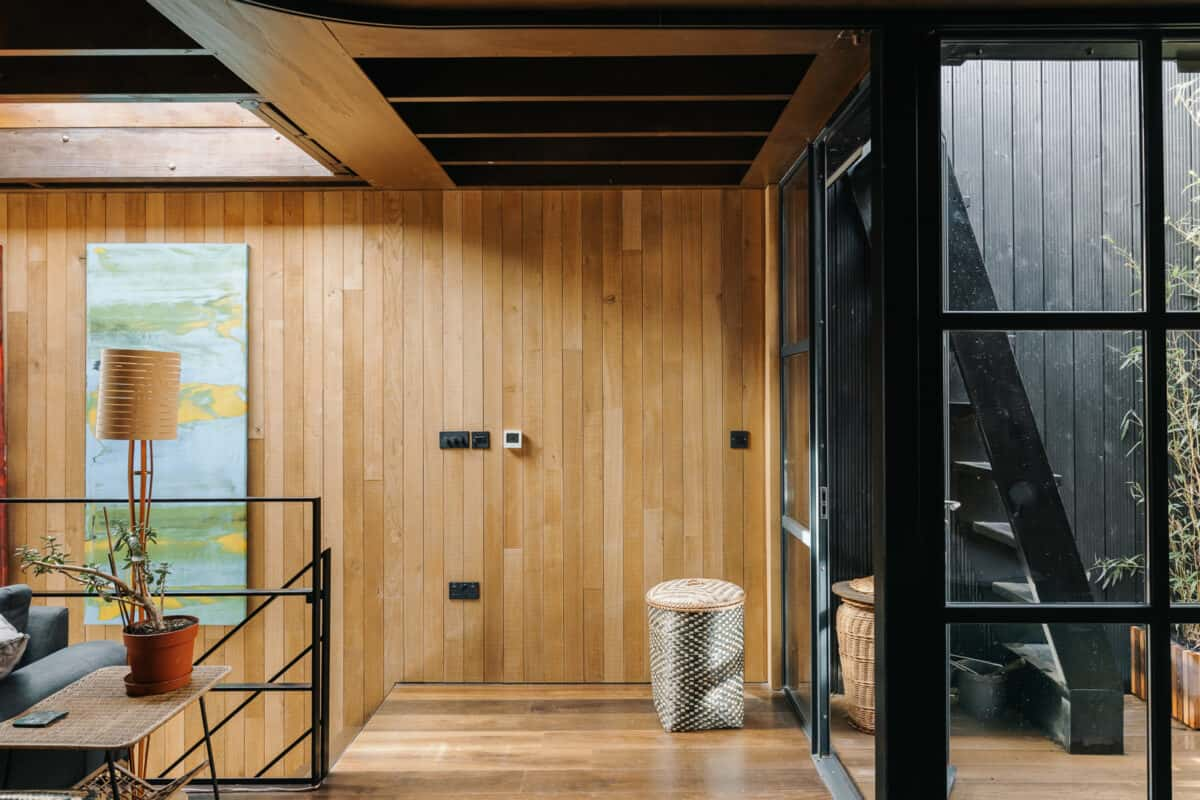
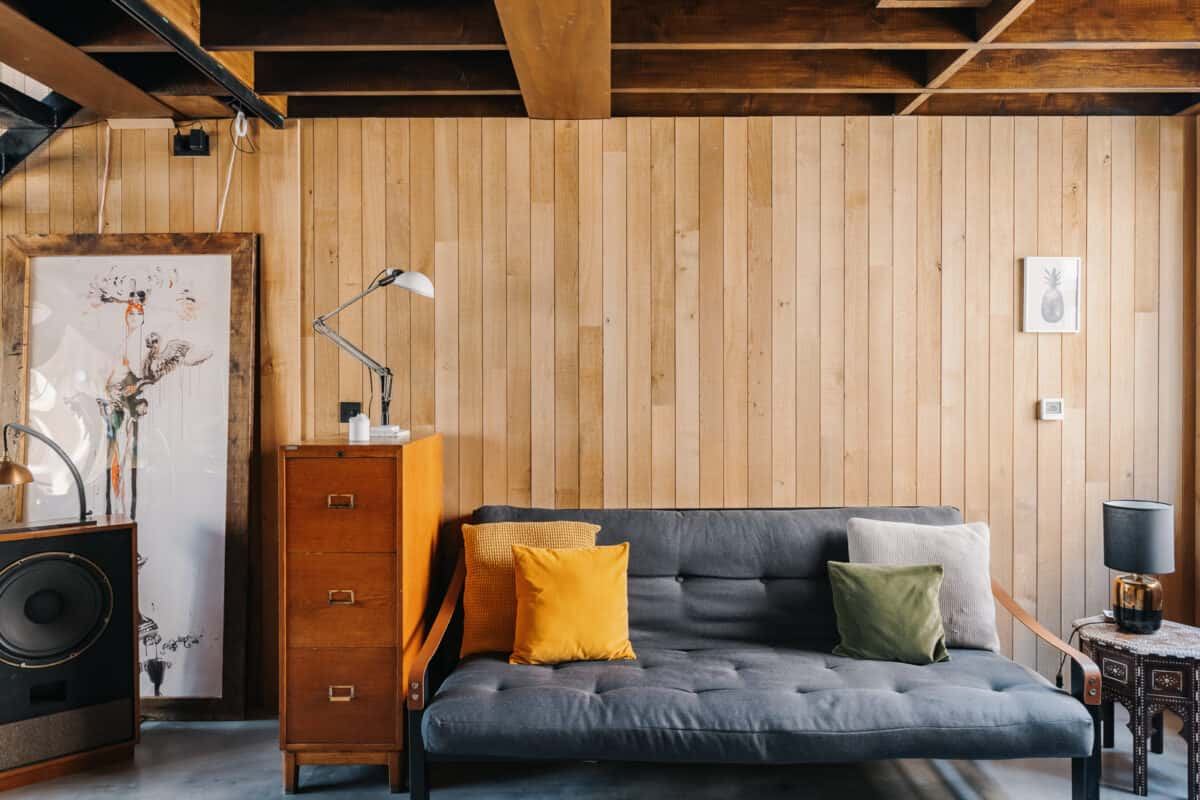
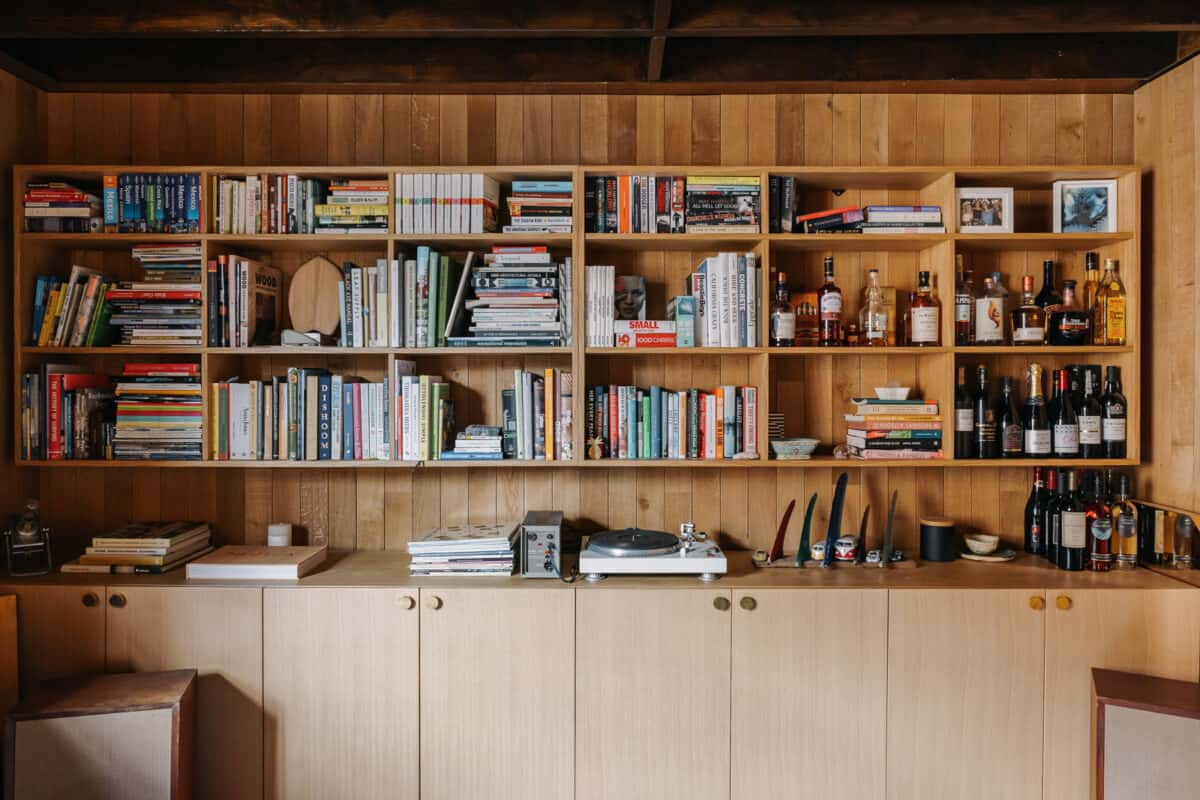
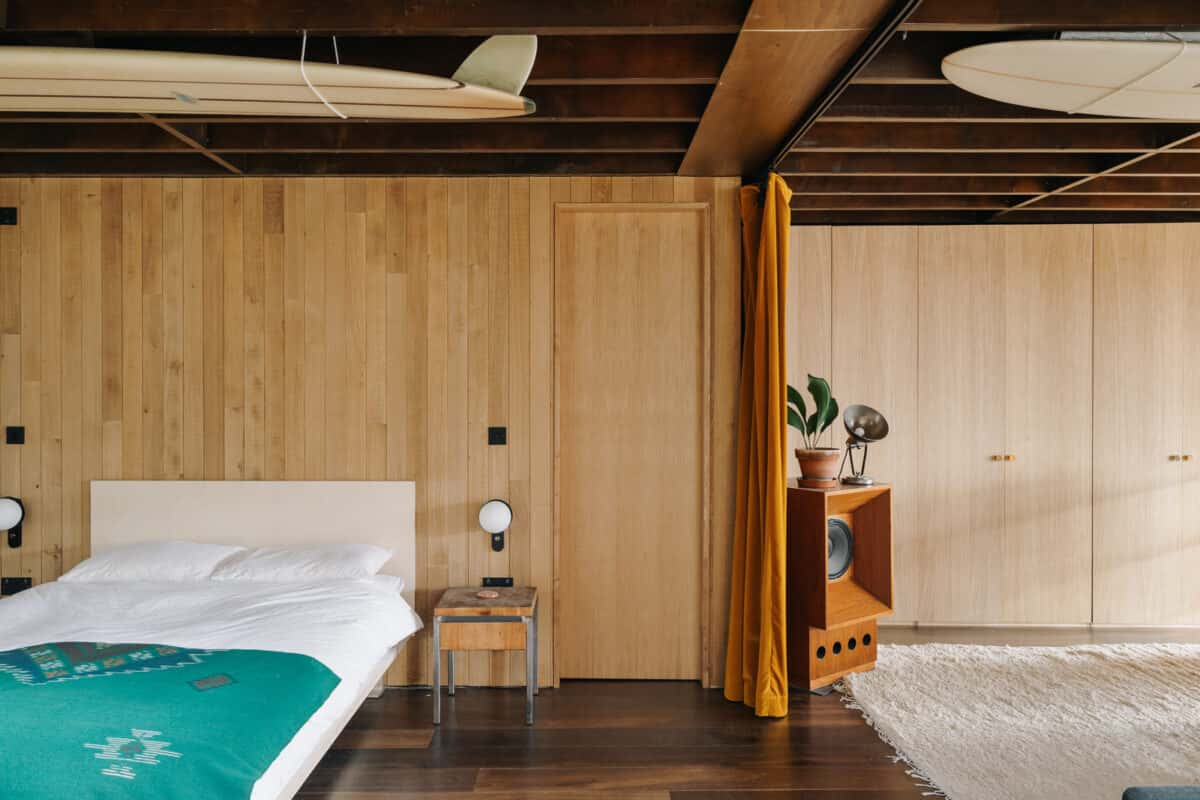
“We designed this when I was in my early thirties and I wanted to carry on warehouse living – I wanted a live/work space. Now I’ve had little Leo and I’m ready for the next challenge – we’re ready for the next journey
“Since growing up in my parents’ home, I’ve never lived in a traditional house, but now I imagine moving to a Victorian house – hopefully something in this area. It’s definitely going to be different, but I’m excited. I’m a project-based person so I plan to buy a wreck and transform it.
“We really love the area. There’s a nice community – wine bars and coffee shops have started popping up. It’s suddenly starting to become a bit more of a thing. During lockdown, we realised our proximity to Hackney Marshes and the huge, open spaces. That was a game-changer.
“As the space is so multifunctional, it could suit a whole number of people. It shouts out ‘artist’ because of the big messy workshop, but it could be turned into a yoga studio, an office – it’s limitless what you could do down there. I’m interested to see what people’s ideas would be.”

